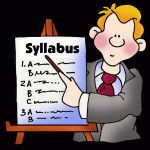The following tip from the 2012-2013 Teaching Issues Writing Consortium: Teaching Tips was contributed by Anabella Martinez, Professor of the Education Department Director of the Centro for Teaching Excellence (CEDU) Universidad del Norte (Barranquilla, Colombia).
Many professors may ask themselves if their students read the course syllabus, and what do they get out of such reading. In light of this, in spring of 2011 I started to implement the creation of learning contracts in my courses with two purposes in mind: (1) to promote the reading of the syllabus at the start of the course and (2) to foster self-regulation in students´ learning. For the first course assignment students present a draft of a learning contract where they establish a learning goal to accomplish in the course for the term, and identify what they consider helpful from me as a professor and their peers in order to attain such goal. The criteria for the learning goal includes: relation to course content, achievable in the term, and measurable. The learning contract format contains the following elements:
Response to the following questions:
- What do they commit to as students in the course in order to accomplish such goal?
- What do they need from me as their professor in order to accomplish their learning goal?
- What do they need from their peers in the course in order to accomplish their learning goal?
In order to help students complete their learning contract, the first class session involves a workshop for students to learn to write learning goals using Bloom´s (2001) and Fink´s (2003) taxonomies. In the second class session students give each other feedback on their learning contracts, make adjustments, and hand it in at the end.
Throughout the term, students engage in three self-assessment exercises where they evaluate their progress towards their learning goals. The same self-assessment instrument is used in each occasion. The instrument includes a series of closed and open ended questions where students respond to aspects such as:
- Perception of their progress towards the attainment of their learning goals
- What aspects of the class have helped in this attainment
- What aspects of the class have made this attainment difficult
- What they would do differently as students for the rest of the term in order to attain their learning goal
- What they would like for me as their professor to do differently for the rest of the term in order to attain their learning goal
- What they would like for their peers to do differently for the rest of the term in order to attain their learning goal
I present consolidated results of each self-assessment exercise in a class session which serves as input for group discussion on how the class is progressing and how they feel about such progress. In sum, the learning contract activity has proven to be useful to engage students in the course content and for me as the professor to identify during the semester the aspects of the class that student perceive to help and hinder their learning.
Submitted by:
Anabella Martinez, Professor of the Education Department
Director of the Centro for Teaching Excellence (CEDU)
Universidad del Norte (Barranquilla, Colombia)
Anderson, L. W., & Krathwohl, D. R. (Eds.). (2001). A taxonomy for learning, teaching and assessing: A revision of Bloom’s Taxonomy of educational objectives: Complete edition, New York : Longman.
Fink, L. D. (2003). Creating significant learning experiences: An integrated approach to designing college courses. San Francisco: Jossey-Bass.

